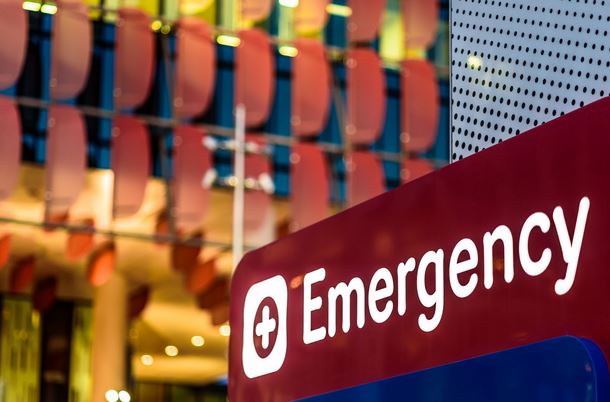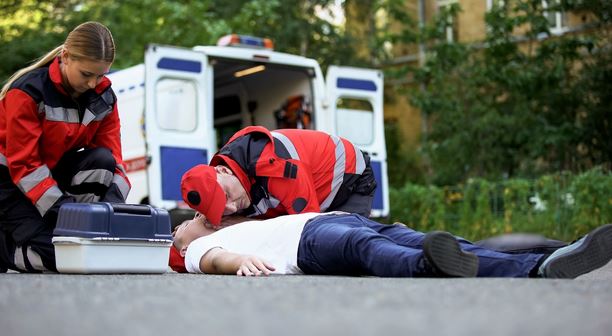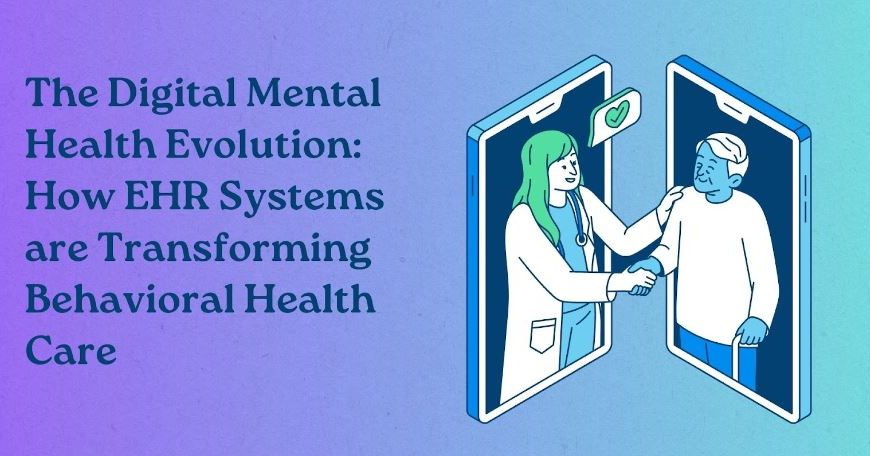It’s usually difficult for anyone to make a concrete decision during an emergency, as there’s a rush of adrenaline and stress that could affect your decision, especially if you’re a patient with a life-threatening condition.
Nowadays, calling an emergency has become much more difficult for everyone due to the pandemic. Most hospitals aren’t able to accept patients immediately, and there are a lot of protocols to follow before getting admitted. That’s why it’s important to plan everything ahead of time.
There are many things every patient should know about emergency care, including factors to consider before, during, and after an emergency. So, what are these things?
1. Check Hospitals Near You
Since no one knows when the next emergency will occur, it’d be best to check all the possible hospitals near you with intensive emergency care. This way, you know where to go in case an emergency happens, but why should you know this when you can call 911 for help?

As mentioned earlier, it’s difficult for anyone to decide what to do during an emergency. Some people would call 911 immediately, and others probably will take themselves to the hospital using their car. However, if you’re the one experiencing symptoms, call for an emergency and never try to drive for yourself to avoid accidents, which could harm not only yourself but also other civilians.
Knowing a hospital near you is just a backup for other manageable conditions. However, it’s still advisable to call an emergency rather than going to the hospital yourself. Click here if you want to know the services you can get during an emergency.
2. Learn the Difference Between Urgency and Emergency Care
Emergency care calls for life-threatening conditions such as:
- Loss of consciousness
- Shortness and loss of breath
- Heart attack
- Head injuries
- Strokes
- Major burns
- Seizure attacks
- Bleeding
On the other hand, urgent care calls for conditions that aren’t life-threatening. However, these conditions still require immediate medical treatment as soon as possible such as:
- Sports injuries like strains, fractures, ligament tears, sprains, cuts and lacerations, and painful joints
- Fever
- Minor burns
- Urinary problems and infections
- Throat problems
- Respiratory conditions
- Nausea and vomiting
- Diarrhea
You can now define conditions that require immediate emergency treatment with this information. Nevertheless, if these conditions appear, get medical treatment as soon as possible.
3. Know What to Do During an Emergency
If someone in front of you suddenly collapses, how will you assess the situation? You’re probably thinking of calling 911. That’s a good idea, but did you know that you can do much more to save someone rather than just calling?
When you call 911, the dispatcher will ask you about the emergency and tell you what you can do to save anyone. Here are the common emergencies you might encounter with anyone and the things you need to do:
- Fainting or Dizziness
If someone collapses in front of you, immediately call 911 for help. Fainting or dizziness may result from existing medical conditions such as diabetes, heart attack, stroke, low blood sugar, or intense climate heat.
After you call for help, ask them questions to determine their level of orientation if they’re still able to respond properly. In case they’re unresponsive to your questions, check their heartbeat, pulse, and airways. If you’re alone in this situation, try to find someone to help you.
If the patient isn’t breathing, perform CPR (cardiopulmonary resuscitation). If you don’t know how to perform this, the dispatcher will stay on the line and instruct you what to do.
- Bleeding
Even simple bleeding such as a nosebleed can have serious complications. If you know someone with a history of high blood pressure and see them having a nosebleed, then consider it a potential disaster. If you find anything scary and bloody, call 911 right away.
If you see someone bleeding excessively, don’t think of doing a tourniquet. According to experts, they may cause additional tissue damage, so apply direct pressure with a cloth on the bleeding site.
- Seizure Attacks
Seizures are common in children and people with high fever, epilepsy, or stroke. They may fall or make movements that could harm you even when you’re only trying to help them. If you see someone with this condition, call 911 immediately and get everyone away from them.
The only thing you can do is wait for the paramedics, check how long the seizures may last, and prevent them from hurting themselves.
- Chest Pain
If you see someone grabbing their chest because it hurts, assume it’s a heart attack unless medically proven. The first thing you need to do is check the ABCs of emergency, which stands for airway, breathing, and circulation. If they’re not breathing, start to perform CPR.
- Choking
If you see someone start to cough during mealtime, it’d be best to let them on their own. Yes, you read it right. Only consider it an emergency if there’s no coughing. If a person coughs, it means they’re still breathing. However, if they don’t, their face will turn red, which means you have to perform the Heimlich maneuver.
Remember, don’t try to perform the Heimlich maneuver if they’re still coughing as the process could make it worse. Only perform this step if you don’t hear them making any noise.
4. Know the Hospital’s Steps for Emergency Care
Do you know what to expect when you arrive at the hospital? It’s the role of every hospital’s emergency department to provide the utmost medical care to patients suffering from major illnesses or other conditions requiring immediate treatment.
Here are the specific procedures you should expect when you arrive at the emergency room:
- Determining Your Condition
Also known as triage, this is the primary step you’ll encounter when you arrive. Any medical professional at the scene will ask you or your guardian about the severity of your condition. Usually, patients with severe medical conditions receive treatment as soon as possible. That’s why some patients who came before you are being treated first.
During this step, a registered nurse will take a brief examination of your symptoms and check your medical history. After this, the nurse will assign your priority level based on your current condition. Levels may vary from one to five, one being the highest priority level for people with life-threatening illnesses and five being the lowest or the non-urgent care.
However, if your symptoms get worse, call a nurse or doctor and notify them immediately.
- Registration
This is an important step you shouldn’t take for granted. In this process, an emergency department will gather important details about your health, create a record based on the information you gave, and obtain your consent to receive proper medical treatment.
After giving out your information, the attending doctor will be able to assess your condition properly and determine the necessary treatment for your condition.
- Treatment Process
Depending on the severity of your condition, the first thing registered nurses usually do is apply an intravenous line. IV line allows nurses to administer medications required by the doctor quickly.
During this step, the attending nurse may require you to have a series of tests such as X-ray, urine, and blood tests before a doctor sees you. However, there are instances where a doctor will require an additional blood test on an urgent basis, which could be taken in just two to three hours.
These tests will help your doctor assess your condition, and during your treatment, nurses and staff will ensure that you’re comfortable and well-informed about your condition.
- Reevaluating Your Condition
A doctor or nurse may reevaluate your condition depending on your latest test results. There might be a change in medical treatment. Only you can feel if there’s something wrong with your body. If you experience pain, discomfort, or new symptoms, immediately inform the nurses present at the scene. Nurses may call a doctor for any additional detail.
After your reevaluation, the doctor will determine if you need to be admitted and treated at the hospital or sent home.
- Hospital Discharge
This is the most anticipated part of every patient. Before you get discharged, your doctor will inform you of the medications you need to take and the restrictions you have to avoid. If the doctor requires you not to do something, then don’t do it. Otherwise, you want to go back to the hospital and get treated once more.
Follow these orders to prevent any complications that may arise and to ensure the consistency of the healing process.
5. Learn What to Do During an Emergency
These are the things you need to do and plan ahead of time to make it less stressful for you as a patient and for your loved ones:
- Always Bring Important Health Information
If you know you have a serious medical condition, it’d be best to prepare written information about it. As much as possible, always bring with you the following documents:
- List of medication
- List of allergies
- Medical history
- Contact details of your doctor
- Contact details of your family members
- Photo identification
Make sure that these documents are updated, especially your medications. If you don’t have these on hand, you may take a photo of some records such as your allergies and medications. You may also use smartphone health apps to keep your records properly.
- Call Your Doctor Ahead of Time
If you experience symptoms that need immediate medical attention, call your doctor and advise that you’ll be coming soon. However, this doesn’t guarantee that you’ll be examined as soon as you arrive. All patients in the emergency department are sorted, prioritizing those who have life-threatening conditions as much as possible.
However, there’s a bright side to your call. After your talk with your doctor, all the details regarding your medical condition will be communicated to the emergency staff accordingly.
- Prepare Your Insurance Cards
Many people waste time searching for insurance documents instead of getting treated immediately. Never delay your treatment just to look for your insurance cards. Hospitals will accept you regarding your insurance status. Also, you may check your insurance later, but for now, just think about your health and getting emergency care.
If you don’t want to miss it during your next emergency, make sure to have it in your bag or wallet all the time, so you don’t have to waste your precious time doing unnecessary things.
- Put Your Phone On ‘In Case Of Emergency’ Status
Make sure to save all your important contacts, especially your family members or anyone who has an idea about your condition, and label these contacts as ICE (in case of emergency). Emergency staff know how this status works, so there’s nothing to worry about.
However, all of these are useless if your phone’s battery gets drained. Always make sure that your phone has enough power for emergencies.
Endnote
Everyone, including you, wants to avoid getting involved in an emergency. However, no matter how much you try to avoid it, accidents and unplanned circumstances may still occur. The only thing you can do is lessen your worries and prepare for any medical emergency ahead of time.
While there are some measures you can do, it can’t be denied that your capacity in saving a life is up to some extent only. When you think things are getting out of hand, immediately call an emergency response team, so matters won’t get even worse. As much as you can, never self-medicate as this might lead to further complications down the road.
Try to learn all the things that could come in handy when needed such as basic emergency first aid. Don’t forget to bring your necessary documents, including your medical history and medications, insurance policy, and contact details of your family members. Consider the ideas mentioned here as you take care of yourself and your loved ones.




